Pennsylvania is an enormous state containing different types of wildlife. The Appalachian Mountains run from the southeast to the northwest of this state; therefore, you can imagine the amount of flying creatures in this state. The largest portion of Pennsylvania’s income comes from its farms. There is a mixture of flying animals and insects that help control pests around farmland; however, there is one particular flying insect that is a big threat. This article will list the most common flying creatures seen throughout this large, populous state.
1. Northern Flying squirrel
The Northern Flying squirrel is an endangered species protected by the Game and Wildlife Code. There are two types of this species in Pennsylvania, the northern and southern flying squirrel. The northern squirrel lives in the northern conifer forests whereas, the southern live all over the state. The flying squirrel can travel about 65 feet in the air when traveling. They have skin flaps between their wrists and ankles to fly and a flat tail to help them steer in the sky.
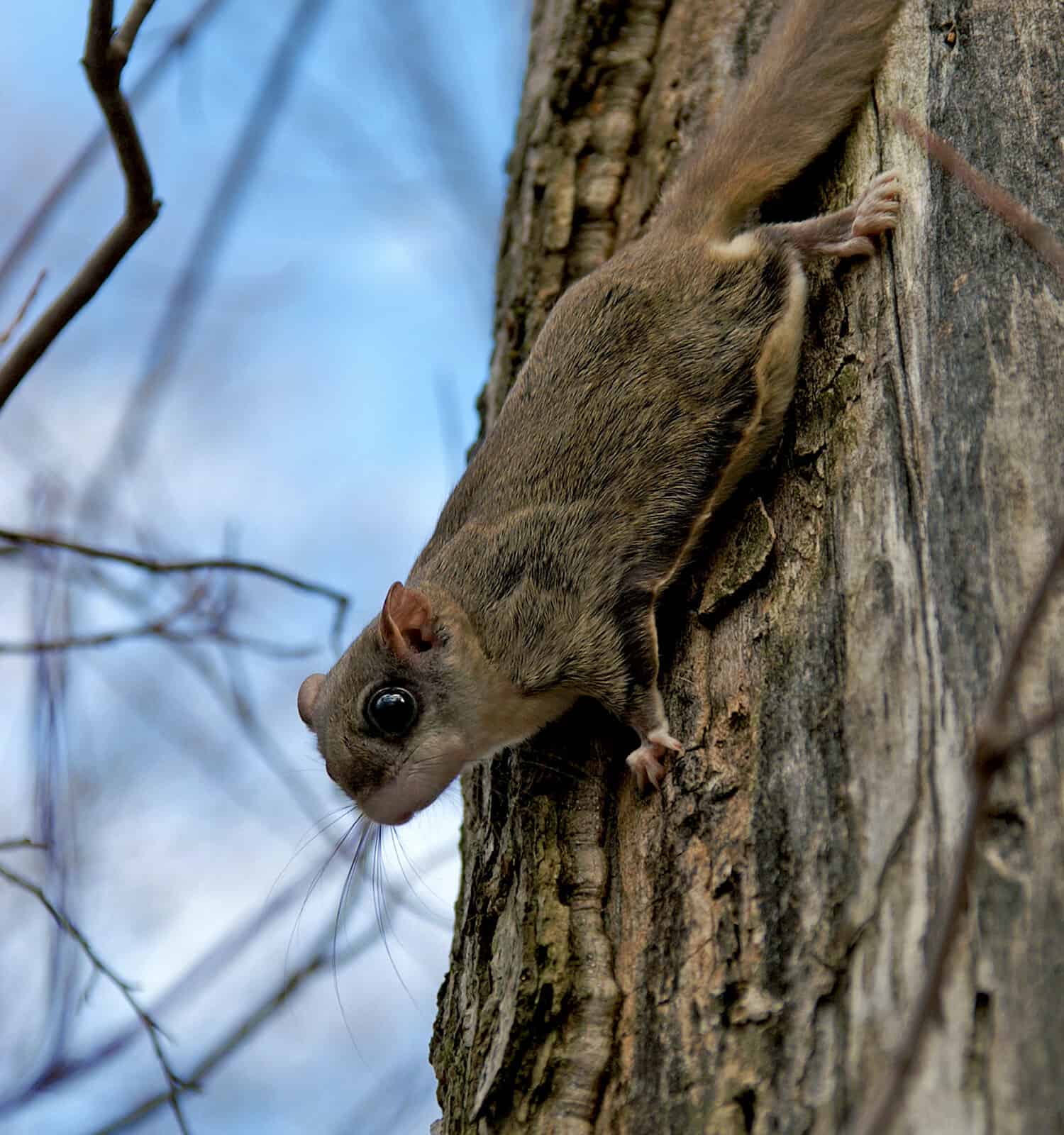
The Northern Flying Squirrel can grow up to 11 inches long.
©IrinaK/Shutterstock.com
2. Bats
There are nine different species of bats in Pennsylvania. The Northern Long-eared and Indiana bats are the two species out of nine that are endangered. Bats are in areas of the state containing woods, caves, tunnels, and mines. When near a bats home, you may hear a high-pitch screech. This noise is called echolocation, which aids them in determining how large objects are around them.
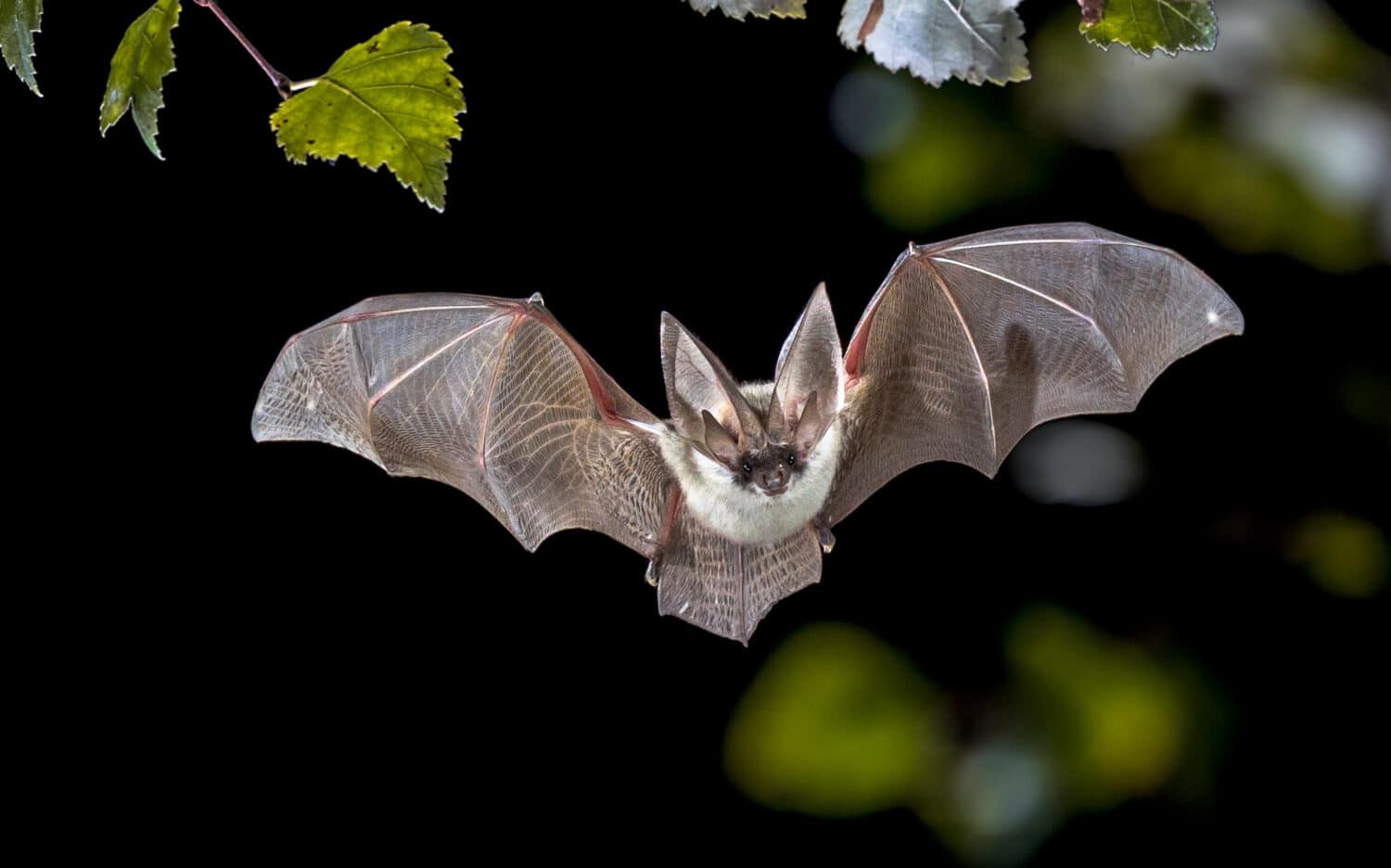
Bats are the only mammals that can fly.
©Rudmer Zwerver/Shutterstock.com
3. Eurasian Goshawk
The Eurasian Goshawk can soar the skies in the northern tier of Pennsylvania. They nest in mixed forests and high elevations of the state. This hawk is an ambush hunter, meaning they wait quietly for their prey and then attack at high speeds. The size of the goshawk is similar to the forest raptor because of its short, round wings, and long tail.
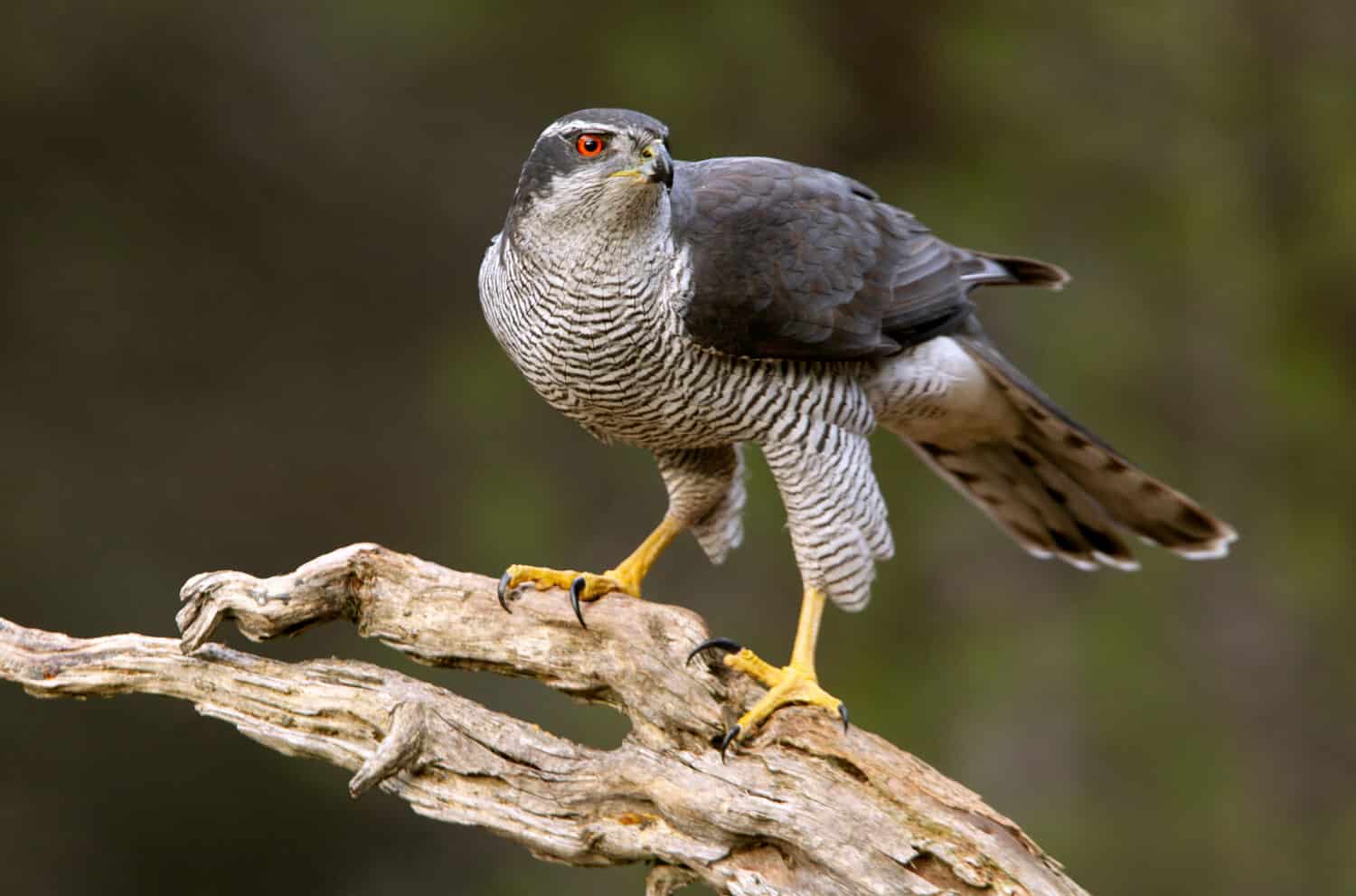
The Eurasian Goshawk is Pennsylvania’s largest and bulkiest type of hawk.
©Jesus Giraldo Gutierrez/Shutterstock.com
4. Red-tailed Hawk
The Red-tailed hawks sit on tall perches near highways in search of their next prey. This hawk feeds on lizards, rabbits, rodents, and other small animals. They nest in dense hardwood forests of Pennsylvania to avoid any potential threats or predators. The female hawk can lay between 1 to 5 white eggs with brown spots.
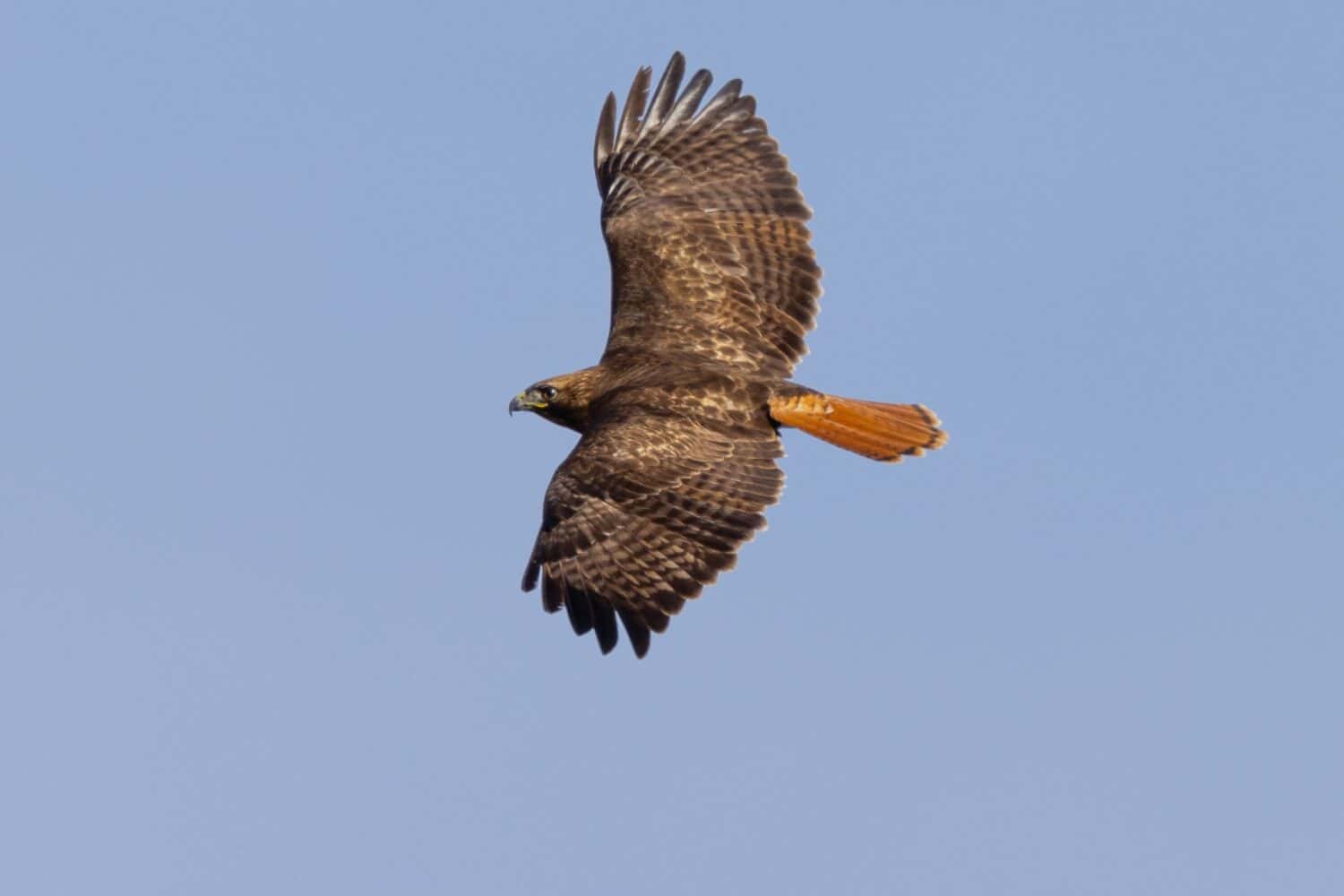
The Red-tailed hawks can spot their prey 30 meters away while soaring in the sky.
©ranchorunner/Shutterstock.com
5. Merlin
Merlins are a type of falcon that is small and dark. These solo creatures tend to hunt around shorelines and open areas of Pennsylvania. Merlins will also perch in open areas for long periods searching for their next meal. During winter and the migration season, Merlins fly in open forests and around coastal areas with other small birds.

Merlins have sharp, pointed wings and a broad chest.
©Noah Li/Shutterstock.com
6. Bald Eagle
In 1980, there were only three pairs of Bald eagles in Pennsylvania. By 2006, there were about 100 nesting pairs found, so you can understand why these creatures are protected. Eagles have a wingspan of 7 feet and can weigh up to 14 pounds. The Moraine State Park near Petersville is a great spot to observe these creatures soar through the sky between summer and fall.
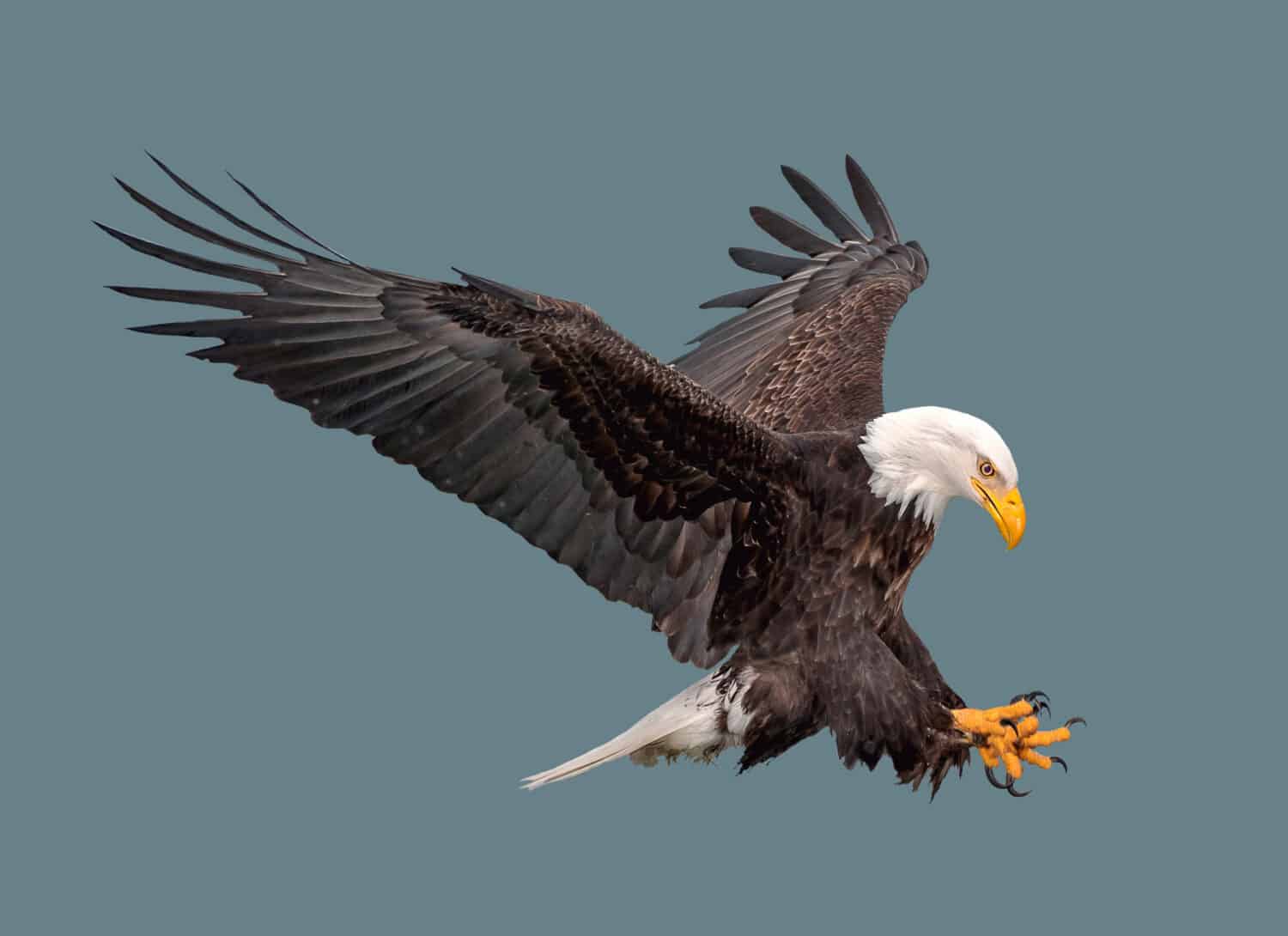
The Bald Eagle also nests along the Susquehanna River.
©PHOTOOBJECT/Shutterstock.com
7. Common Starling
The Common starling flies the skies of suburban, urban, and rural areas of Pennsylvania. They build nests in holes, crevices, and buildings, which can cause a big fire hazard for businesses. This bird looks for their prey in parks, fields, or pastures. Starlings are native to Europe, Western Asia, and Northern Africa. Their introduction to the United States was in the 1980s.
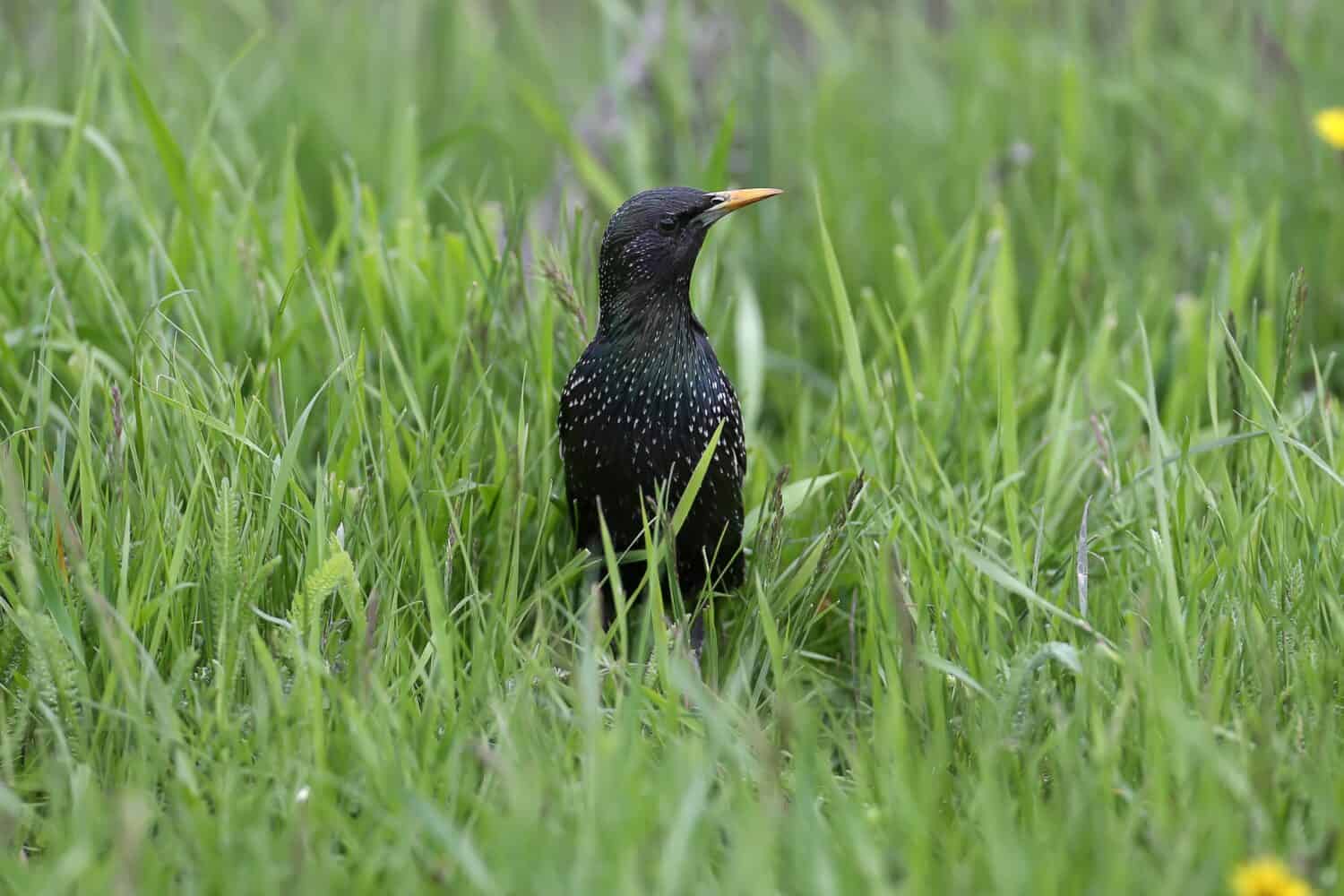
Common Starlings have caused plane crashes in the past because they travel in such a large group.
©Voodison328/Shutterstock.com
8. Cooper’s Hawk
Cooper’s Hawk nest in deciduous, mixed deciduous, and evergreen forests of Pennsylvania. The abundance of this hawk soars around Hawk Mountain in East Brunswick township. Cooper’s hawk is a tad bit smaller than a crow, weighing up to 20 ounces. This bird has a large head, broad shoulders, and a rounded tail.
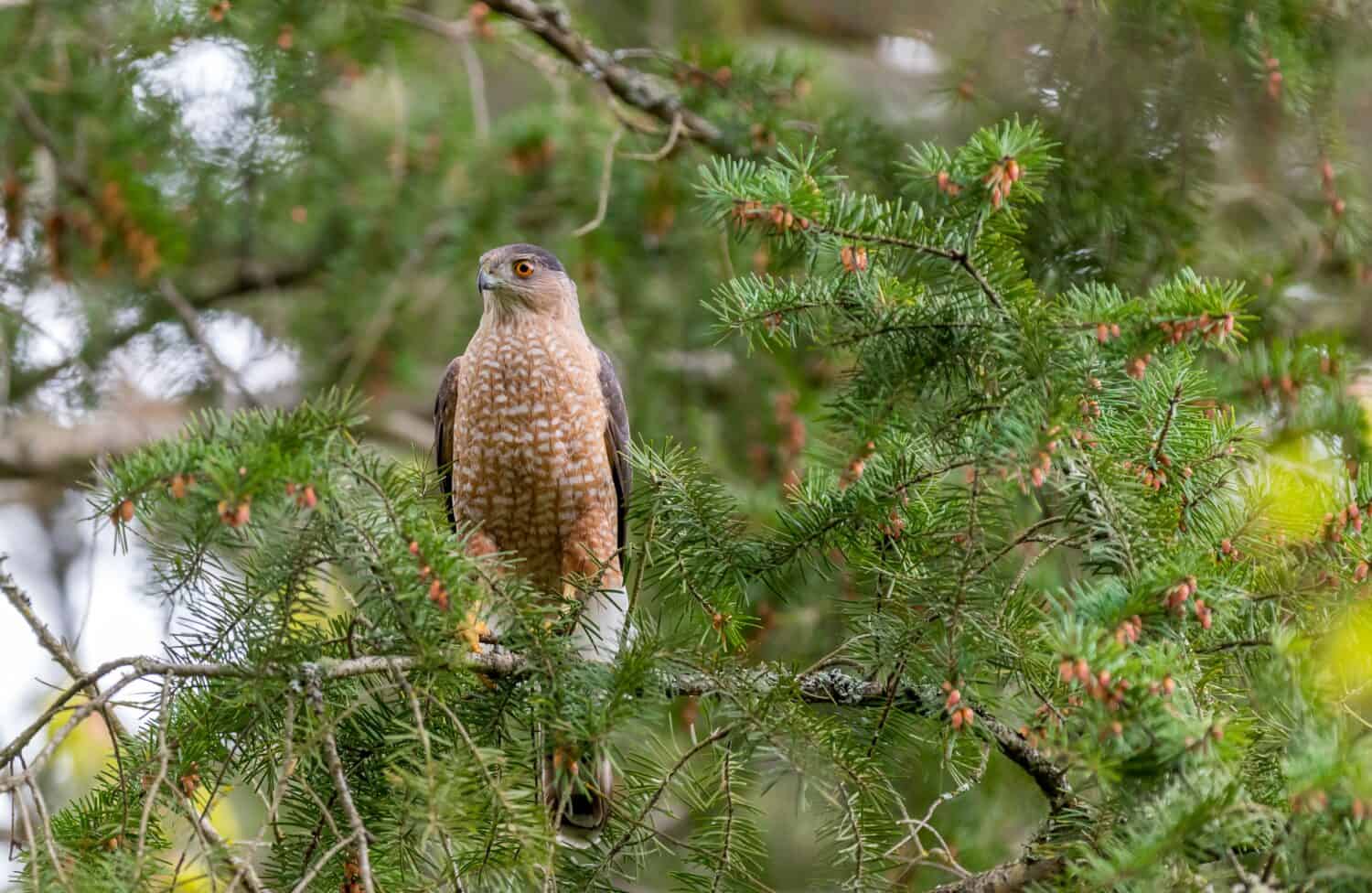
The Cooper’s Hawk is slightly smaller than a crow but is bigger than the Sharp-shinned hawk.
©rhfletcher/Shutterstock.com
9. Osprey
The Osprey has an interesting history. In 1979, the Osprey were listed as extirpated, and then listed as endangered in 1986. They are now labeled as a protected species in Pennsylvania. This bird can weigh up to 4 pounds and grow up to 32 inches long. They nest in large trees, chimneys, billboards, and telephone poles. The Osprey have reversed talons on their feet to grab their fish from the water.

The Osprey is also known as the “fish hawk” because it prefers eating fish.
©Jesus_Miguel/Shutterstock.com
10. American Kestrel
The American Kestrel commonly flies in the Tussey Mountains in Boalsburg, Pennsylvania. They can also soar around farmlands, orchards, and grasslands searching for food. The American Kestrel feeds on grasshoppers, rodents, and other small birds. This bird is a type of falcon that is the size of the Blue jay bird.

The American Kestrel can help control pests around farms.
©mynewturtle/Shutterstock.com
11. Dobsonfly
The Dobsonfly is a grayish-brown flying insect with large pinchers. This large fly is active between late spring and mid-summer months. This pesky fly is attracted to porch lights, so do not be surprised if you see this creature hanging around. Although the male Dobsonfly looks intimidating, it is the females you should be cautious of. The female fly can bite down hard enough on human skin that it draws blood.
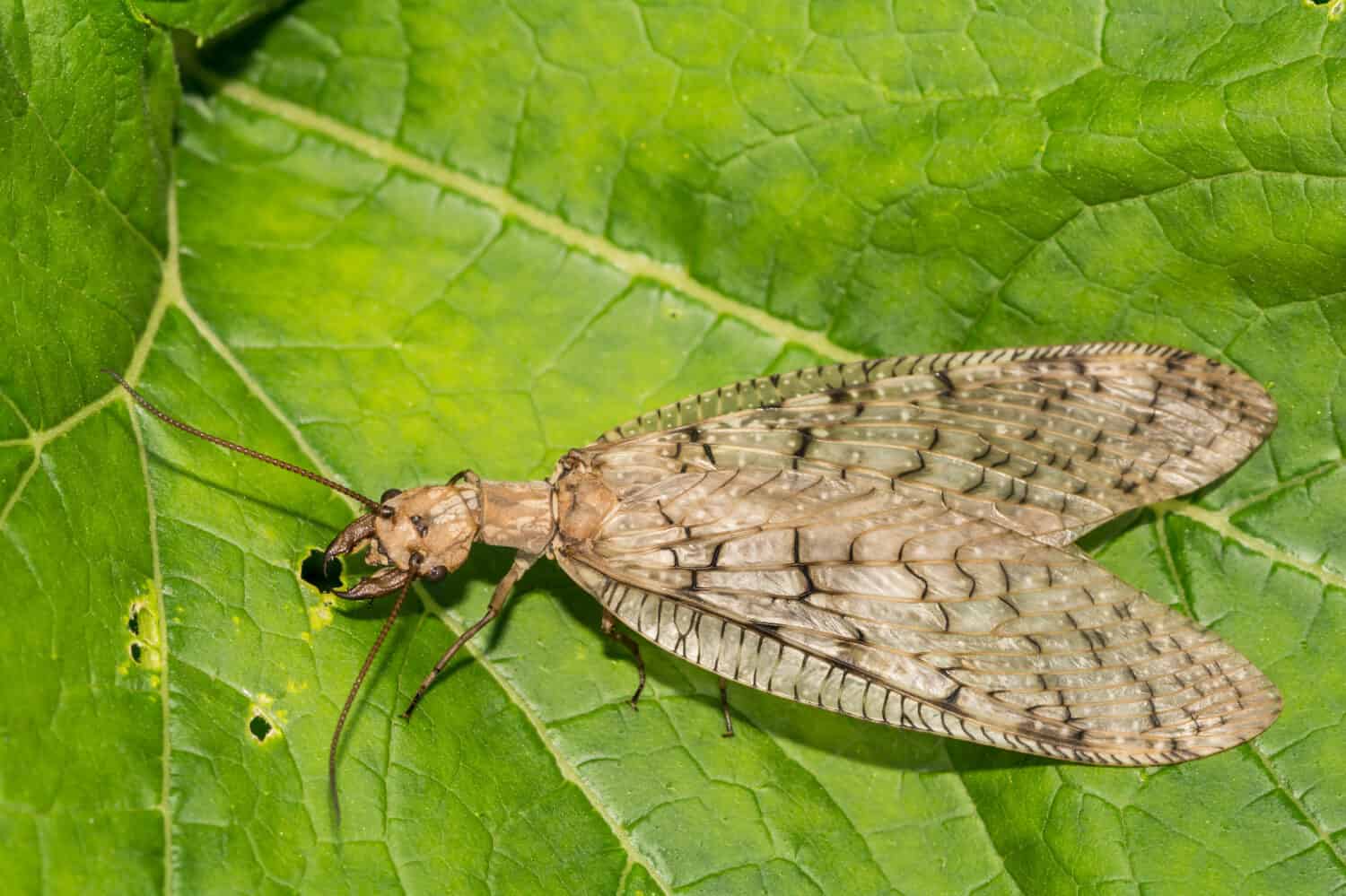
The male Dobsonfly has bigger pinchers; however, they are only for show and intimidation.
©Jay Ondreicka/Shutterstock.com
12. Spotted Lanternfly
The Spotted Lanternfly is native to Asia and was discovered in Berks County, Pennsylvania in 2014. This large flying insect is notorious for causing severe damage to crops and agriculture. This insect is in 51 counties of Pennsylvania and the Department of Agriculture is trying to keep this creature from spreading all over the state. It is recommended that if this insect is seen outside of the quarantine zone, kill it and notify the proper authorities.
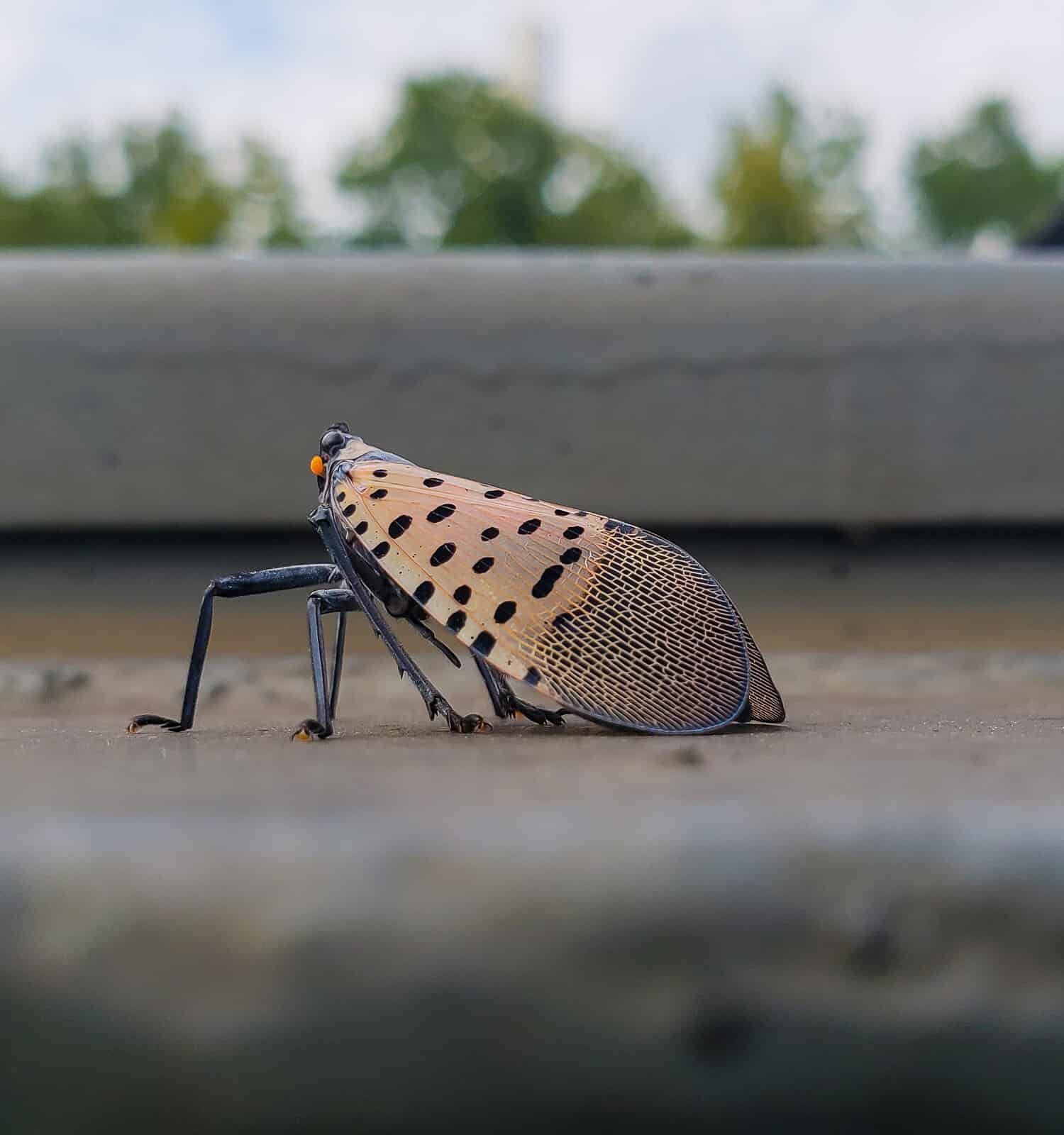
The Department of Agriculture is currently working to keep the Spotted Lanternfly quarantined.
©Jeremy Ferrari/Shutterstock.com
13. Bald-Faced Hornet
The Bald-Faced Horney is commonly found in Philadelphia, Pennsylvania. This hornet is part of the yellow jacket family and is extremely territorial. Female hornets will sting their victims repeatedly leaving red marks on the skin. The Bald-Face hornet builds its nests in shrubs, trees, and on sides of houses. They begin building their nests in spring and summer. By the time late summer arrives, their nests continue to grow at a fast rate.

The Bald-Faced Hornet’s nest can grow to the size of a beach ball.
©Paul Reeves Photography/Shutterstock.com
14. Wheelbug
The Wheelbug is commonly seen in the southwest parts of Pennsylvania. The Wheelbug will help rid pest insects in gardens and around forests. The bug has earned its name because of the crested-like wheel on its back. This insect is slow to defend, but when it does their bite is worse than the sting of a wasp. The bite will leave a localized numbness that can last for days.
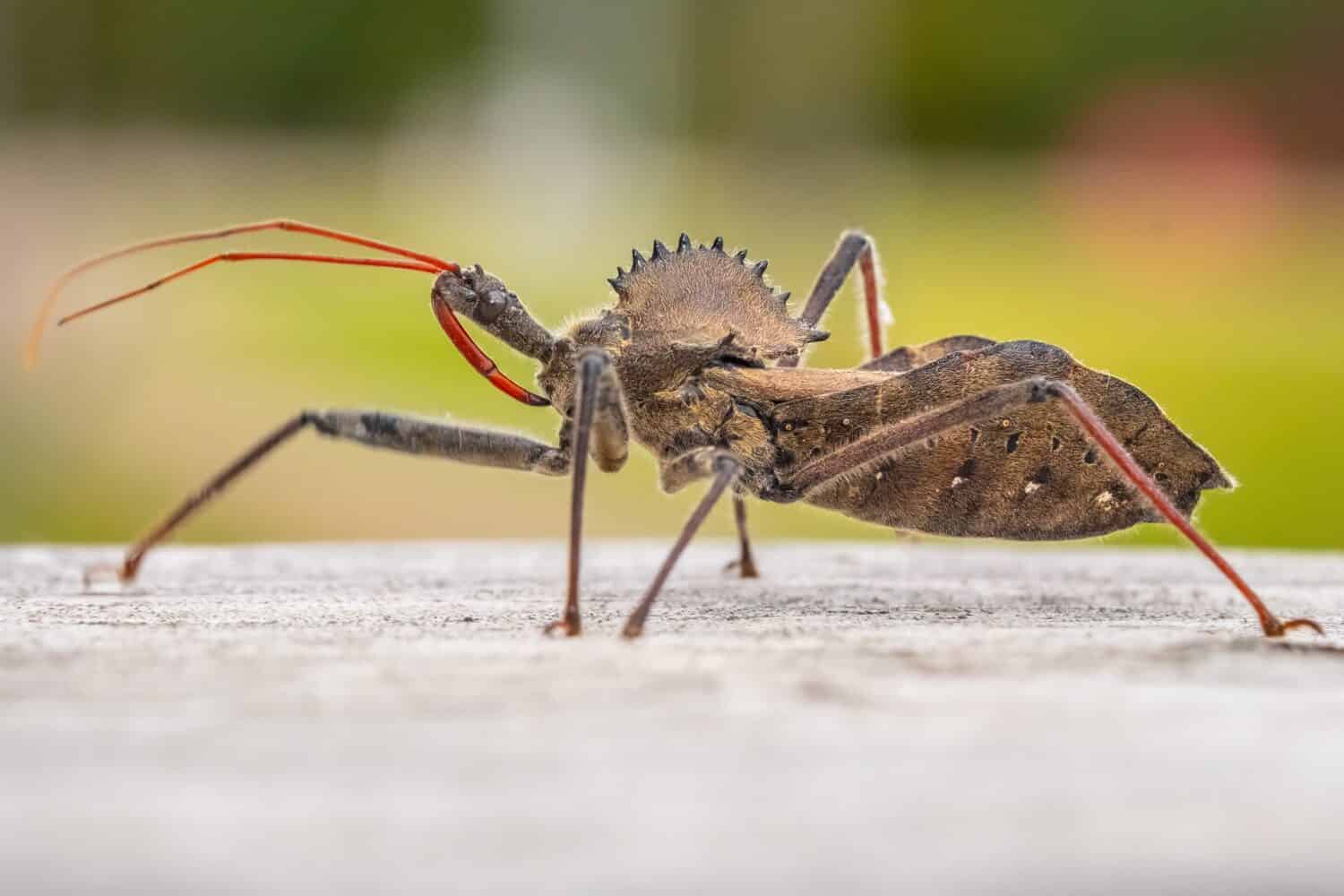
The Wheelbug can reach up to 1.5 inches long.
©samray/Shutterstock.com
15. Cicada Killers
Cicada Killers are a very large type of wasp that nest in urban areas of Pennsylvania. They are mainly in Pittsburgh and Newton cities. Cicada killers paralyze the cicadas and carry them off to feast. Although these wasps are intimidating-looking, they are harmless and typically avoid humans. This wasp burrow holes reaching up to 20 inches deep!
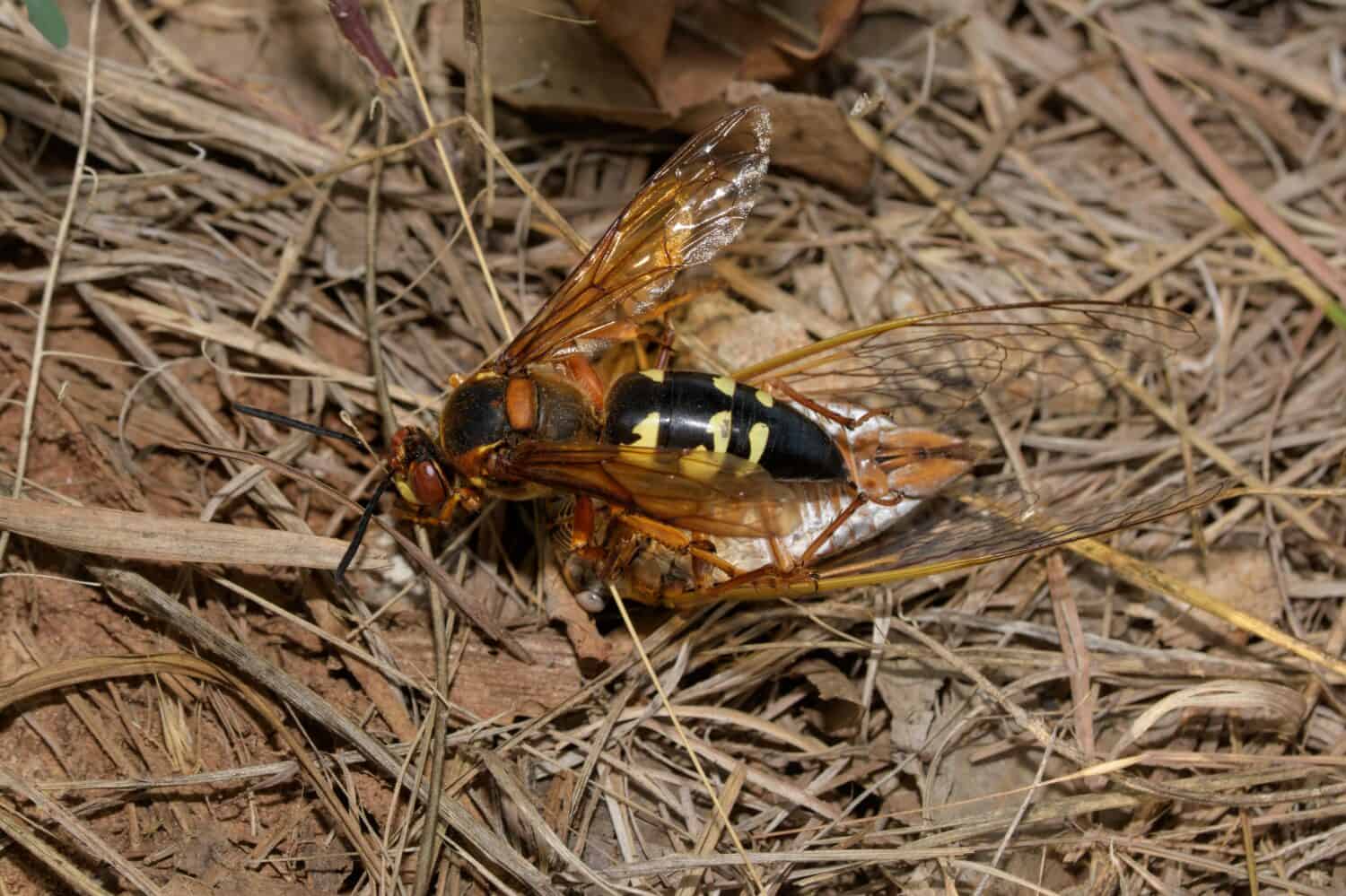
The Cicada Killer is the largest type of wasp, able to grow up to 1.5 inches long.
©Sari ONeal/Shutterstock.com
| 15 of Pennsylvania’s Flying Terrors |
| 1. Northern Flying Squirrel |
| 2. Bats |
| 3. Eurasian Goshawk |
| 4. Red-tailed Hawk |
| 5. Merlin |
| 6. Bald Eagle |
| 7. Common Starling |
| 8. Cooper’s Hawk |
| 9. Osprey |
| 10. American Kestrel |
| 11. Dobsonfly |
| 12. Spotted Laternfly |
| 13. Bald-Faced Hornet |
| 14. Wheelbug |
| 15. Cicada Killer |
The photo featured at the top of this post is © Rudmer Zwerver/Shutterstock.com
Thank you for reading! Have some feedback for us? Contact the AZ Animals editorial team.







